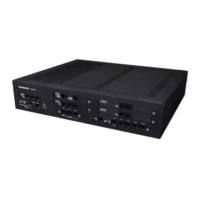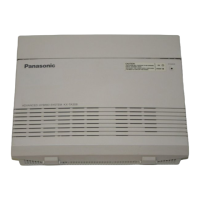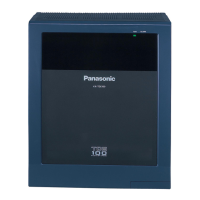Name Description Value Range Links
Tenant
Number
Specifies the tenant number,
to determine the Time Table
by which calls are distributed
depending on the time of day.
1–8
PC Programming Manual
References
10.4 PBX Configuration—[2-4]
System—Week Table
Feature Manual References
2.1.1.3 Direct Inward Dialling (DID)/
Direct Dialling In (DDI)
UM Service
Group No.
Specifies the Service Group
number sent to the Unified
Messaging system when the
incoming call destination is the
floating extension number of a
UM group.
The Service Group number is
used to allow the Unified
Messaging system to send the
applicable greeting message
to the caller.
None, 1–64
Feature Manual References
2.1.1.3 Direct Inward Dialling (DID)/
Direct Dialling In (DDI)
3.1.1 Unified Messaging System
Overview
VM Trunk
Group No.
Specifies the number of the
VM trunk group sent to the
VPS when the incoming call
destination is the floating
extension number of a VM
(DPT) Group. The VM trunk
group number is used to allow
the VPS to send the
applicable greeting message
to the caller.
1–48
CLI Ring for
DDI/DID—
Day, Lunch,
Break, Night
Enables CLI distribution in
each time mode.
Disable,
Enable
PC Programming Manual
References
14.1 PBX Configuration—[6-1]
Feature—System Speed Dial
Feature Manual References
2.1.1.3 Direct Inward Dialling (DID)/
Direct Dialling In (DDI)
2.1.1.5 Calling Line Identification
(CLI) Distribution
18.3.1 PBX Configuration—[10-3] CO & Incoming Call—DDI / DID
Table—Automatic Registration
Automatic Registration allows DDI/DID numbers and DDI/DID destinations in each time mode (day/lunch/
break/night) to be programmed at once for a set of locations in series.
18.3.1 PBX Configuration—[10-3] CO & Incoming Call—DDI / DID Table—Automatic Registration
542 PC Programming Manual

